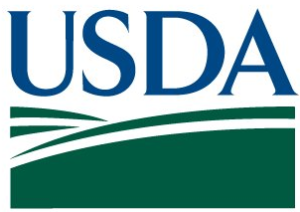Coronavirus Food Assistance Program Details
go.ncsu.edu/readext?693377
en Español / em Português
El inglés es el idioma de control de esta página. En la medida en que haya algún conflicto entre la traducción al inglés y la traducción, el inglés prevalece.
Al hacer clic en el enlace de traducción se activa un servicio de traducción gratuito para convertir la página al español. Al igual que con cualquier traducción por Internet, la conversión no es sensible al contexto y puede que no traduzca el texto en su significado original. NC State Extension no garantiza la exactitud del texto traducido. Por favor, tenga en cuenta que algunas aplicaciones y/o servicios pueden no funcionar como se espera cuando se traducen.
Português
Inglês é o idioma de controle desta página. Na medida que haja algum conflito entre o texto original em Inglês e a tradução, o Inglês prevalece.
Ao clicar no link de tradução, um serviço gratuito de tradução será ativado para converter a página para o Português. Como em qualquer tradução pela internet, a conversão não é sensivel ao contexto e pode não ocorrer a tradução para o significado orginal. O serviço de Extensão da Carolina do Norte (NC State Extension) não garante a exatidão do texto traduzido. Por favor, observe que algumas funções ou serviços podem não funcionar como esperado após a tradução.
English
English is the controlling language of this page. To the extent there is any conflict between the English text and the translation, English controls.
Clicking on the translation link activates a free translation service to convert the page to Spanish. As with any Internet translation, the conversion is not context-sensitive and may not translate the text to its original meaning. NC State Extension does not guarantee the accuracy of the translated text. Please note that some applications and/or services may not function as expected when translated.
Collapse ▲Beginning May 26, 2020, producers can sign up for these payments. Contact your local FSA office to sign up for an appointment.
Direct link to USDA CFAP details
USDA Secretary Sonny Perdue announced the Coronavirus Food Assistance program on April 17, 2020. CFAP will use funding and authorities provided in the Coronavirus Aid, Relief, and Economic Security Act, the Families First Coronavirus Response Act, and other USDA existing authorities. This $19 billion immediate relief program includes direct support to agricultural producers as well as the Farmers to Families Food Box Program.
CFAP will provide vital financial assistance to producers of agricultural commodities who have suffered a five-percent-or-greater price decline or who had losses due to market supply chain disruptions due to COVID-19 and face additional significant market costs. Eligible commodities include:
- Non-specialty Crops:malting barley, canola, corn, upland cotton, millet, oats, soybeans, sorghum, sunflowers, durum wheat, and hard red spring wheat
- Wool
- Livestock: cattle, hogs, and sheep (lambs and yearlings only)
- Dairy
- Specialty Crops
- Fruits: apples, avocados, blueberries, cantaloupe, grapefruit, kiwifruit, lemons, oranges, papaya, peaches, pears, raspberries, strawberries, tangerines, tomatoes, watermelons
- Vegetables: artichokes, asparagus, broccoli, cabbage, carrots, cauliflower, celery, sweet corn, cucumbers, eggplant, garlic, iceberg lettuce, romaine lettuce, dry onions, green onions, peppers, potatoes, rhubarb, spinach, squash, sweet potatoes, taro
- Nuts: almonds, pecans, walnuts
- Other: beans, mushrooms
USDA will consider additional crops to be eligible for CFAP by collecting information on potentially eligible crops.
Eligible farmers and ranchers will receive one CFAP payment, drawn from two possible funding sources. The first source of funding is $9.5 billion in appropriated funding provided in the CARES Act and compensates farmers for losses due to price declines that occurred between mid-January 2020, and mid-April 2020 and for specialty crops for product that was shipped and spoiled or unpaid product. The second funding source uses the Commodity Credit Corporation Charter Act to compensate producers for $6.5 billion in losses due to on-going market disruptions.
Beginning May 26, USDA’s Farm Service Agency will be accepting applications from agricultural producers who have suffered losses. The application form and a payment calculator for producers will be available online once signup begins. A video preview of the payment calculator is currently available.
To learn more about CFAP, download the final rule, notice of funding availability, and cost-benefit analysis.
Program details are specific to agricultural commodities, as outlined below:
Non-Speciality Crops (malting barley, canola, corn, upland cotton, millet, oats, soybeans, sorghum, sunflowers, durum wheat, and hard red spring wheat).
Speciality Crops (Fruits: strawberries, tomatoes, watermelons & Vegetables: sweet corn, potatoes, sweet potatoes.
Livestock (cattle, hogs, and sheep (lambs and yearlings only)




